Next week’s market movers
- The main event is probably the BoE gathering. We don’t expect any action at this meeting, given the stagnant business investment for Q2.
- We expect the SNB to repeat that the franc remains significantly overvalued and that the Bank will remain active in the FX market as necessary in order to curb any gains in the currency.
- In the US, the core CPI rate is expected to have declined somewhat, which could drag further down the probability for another Fed rate hike by year-end to drop further.
- On the other hand, we see the case for both the headline and core CPI rates in the UK to have risen. One of the reasons for that may be the recent depreciation of the pound against the euro.
- We also get more key economic data from Sweden, Australia, the UK, the US, and China.
On Monday, there are no major events or indicators on the economic calendar.

On Tuesday, Sweden’s CPI data for August are coming out. Expectations are not public yet, but we believe that both the headline CPI and CPIF rates may have pulled back. We base our view on the fact that since June, SEK has appreciated notably against both the dollar and the all-mighty euro, something that may have eventually weighted on Sweden’s inflation. That said, we believe that market participants will place all their attention to the CPIF print, given that at its latest gathering, the Riksbank decided to adopt inflation measured in terms of the CPIF with the target staying at 2%, but with a variation band of 1-3%.
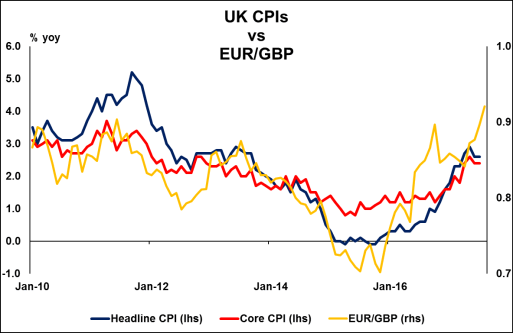
We get CPI data for August from the UK as well. With no forecast available yet, we believe that both the headline and the core rates may have rebounded somewhat. Our view is based on the nation’s services PMI, which showed that firms increased their average prices charged in August at the highest rate since April. The recent depreciation of the pound against the euro supports further the case for accelerating inflation. Even though a rebound in the CPI rates could revive some speculation with regards to a BoE rate hike this year, we remain skeptical on that prospect. (See BoE policy meeting below).
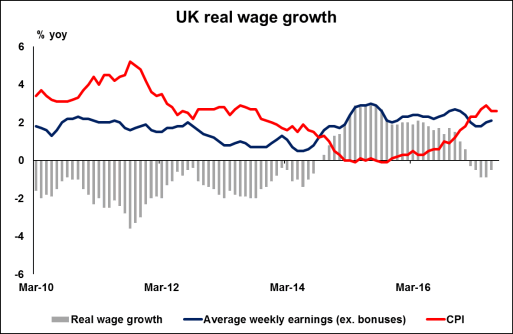
On Wednesday, the UK employment report for July is coming out. No forecast is available at the moment, but we see the case for the unemployment rate to have fallen further. The services PMI showed that jobs growth rose to a 17-month high, while the Markit/REC report on jobs, showed that permanent placements increased to the greatest extent in 27 months. What’s more, the Markit jobs report showed that starting salaries continued to rise in the month, with the rate reaching a 20-month record. This makes us believe that wages may have accelerated, which would be pleasant news for BoE Governor Carney, who a few months ago noted that a rate hike may depend mainly on firming wages and improving business investment. Having said that though, the fact that business investment was stagnant in both quarterly and yearly terms during Q2 will most probably keep BoE hands off the easing button on Thursday.

On Thursday, the main event will be the Bank of England policy decision. The consensus is for the Bank to keep its policy unchanged via a 6-2 vote. At its latest meeting, when alongside the rate decision and the meeting minutes, the BoE published its quarterly Inflation Report, the Bank reiterated that policy may need to be tightened to a somewhat greater extent over the next 3 years than what was implied by market pricing at the time. Nevertheless, it signaled little urgency for a hike in the next months, while it revised lower its inflation and economic growth forecasts.
Since then, CPI data showed that both the headline and core inflation rates remained unchanged in July, but as we noted above there is the possibility for a rebound in August’s prints. Meanwhile, although we expect wages to have accelerated in July, the 2nd estimated of GDP confirmed that economic growth was only +0.3% qoq in Q2, and most importantly business investment prints for the quarter were stagnant in both quarterly and yearly terms.
As such, we don’t expect the Bank to proceed with hiking rates at this meeting, neither at one of the remaining ones until the end of the year. At the time of writing, the UK Overnight Index Swaps (OIS) suggest that the probability for a hike by year-end is 24%. Even though this appears low at first glance, having the aforementioned economic developments in mind, we thing that it is still overly optimistic.
The key risk to our view remains the same as back in August. Despite economic developments suggesting a relatively low likelihood for a hike in the near-term, the BoE may want to revive speculation on that front in order to support the pound and thereby, curb inflation. In this case, Carney could say that the MPC discussed the prospect of a hike, but decided against it for now.
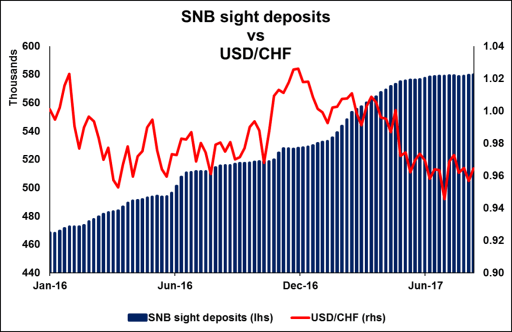
In Switzerland, the SNB will announce its rate decision as well. Economic developments have been somewhat decent since the Bank last met. On the inflation front, the CPI rate dropped notably in June, rebounded thereafter and in August it matched its May levels. The unemployment rate remained unchanged in July, while growth is expected to have accelerated, but slightly, in Q2. As for the all-important franc, it weakened notably against the euro, but it remained relatively unchanged against the dollar. However, the recent weakness against the euro has failed to boost Switzerland’s economic outlook in a meaningful way, evident by the disappointing KOF indicator and Credit Suisse investor sentiment index, both for August.
Therefore, we don’t expect the SNB to change tune. We think policymakers are likely to repeat the usual mantra – that the franc remains significantly overvalued and that the Bank will remain active in the FX market as necessary in order to curb any gains in the currency.
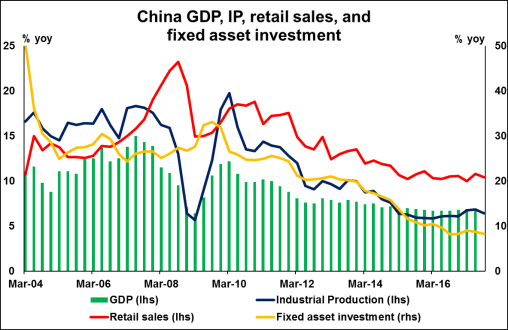
As for the economic indicators, during the Asian morning, Australia’s employment data for August are due out. Our own view is that the labor market may have posted another month of solid employment gains, something supported by the ANZ job ads indicator, which showed advertisements rising for the 6th consecutive.
From China, we get retail sales, industrial production and fixed asset investment, all for August. Expectations are for retail sales as well as industrial production to have accelerated in yearly terms, while fixed asset investment is expected to have slowed somewhat. The forecasts for retail sales and industrial production are supported by the nation’s official manufacturing PMI, which showed that output growth was faster compared to a year ago. What’s more, the production sub-index was much higher than August 2016.
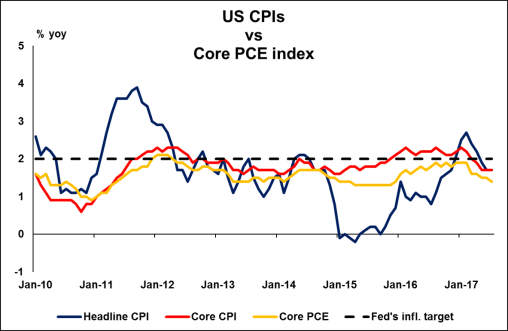
In the US, we get CPI data for August. Given the increasingly concerned remarks on Wednesday by Brainard and Kashkari over inflation and interest rates, this set of CPI data is likely to attract more attention than usual, as it could prove critical on whether the FOMC will indeed proceed with another rate hike this year. Expectations are for the headline rate to have ticked up, but for the core rate to have ticked down. This combination makes us believe that the rise in the headline rate may be owed primarily to movements in volatile items, such as energy-related products and food. Therefore, as long as core inflation remains subdued, we doubt that the headline print will be enough to drag forth expectations for the next Fed hike. Actually, we believe something like that may be the reason for the number of concerned policymakers around inflation to increase at the upcoming Fed meeting, and for the probability for another rate hike by year-end to drop further. According to the Fed fund futures, that probability currently stands at around 30%.
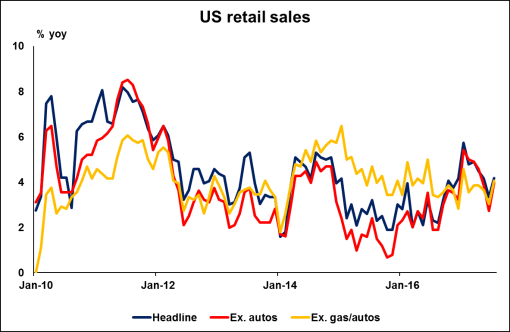
Finally on Friday, we get the US retail sales for August and expectations are for both the headline and core rates to have declined somewhat. That said, both the nation’s consumer sentiment indices for the month did not paint a clear picture. Even though the U o M print declined, the Conference Board index continued to rise, making us hesitant to place too much faith in the forecast.













